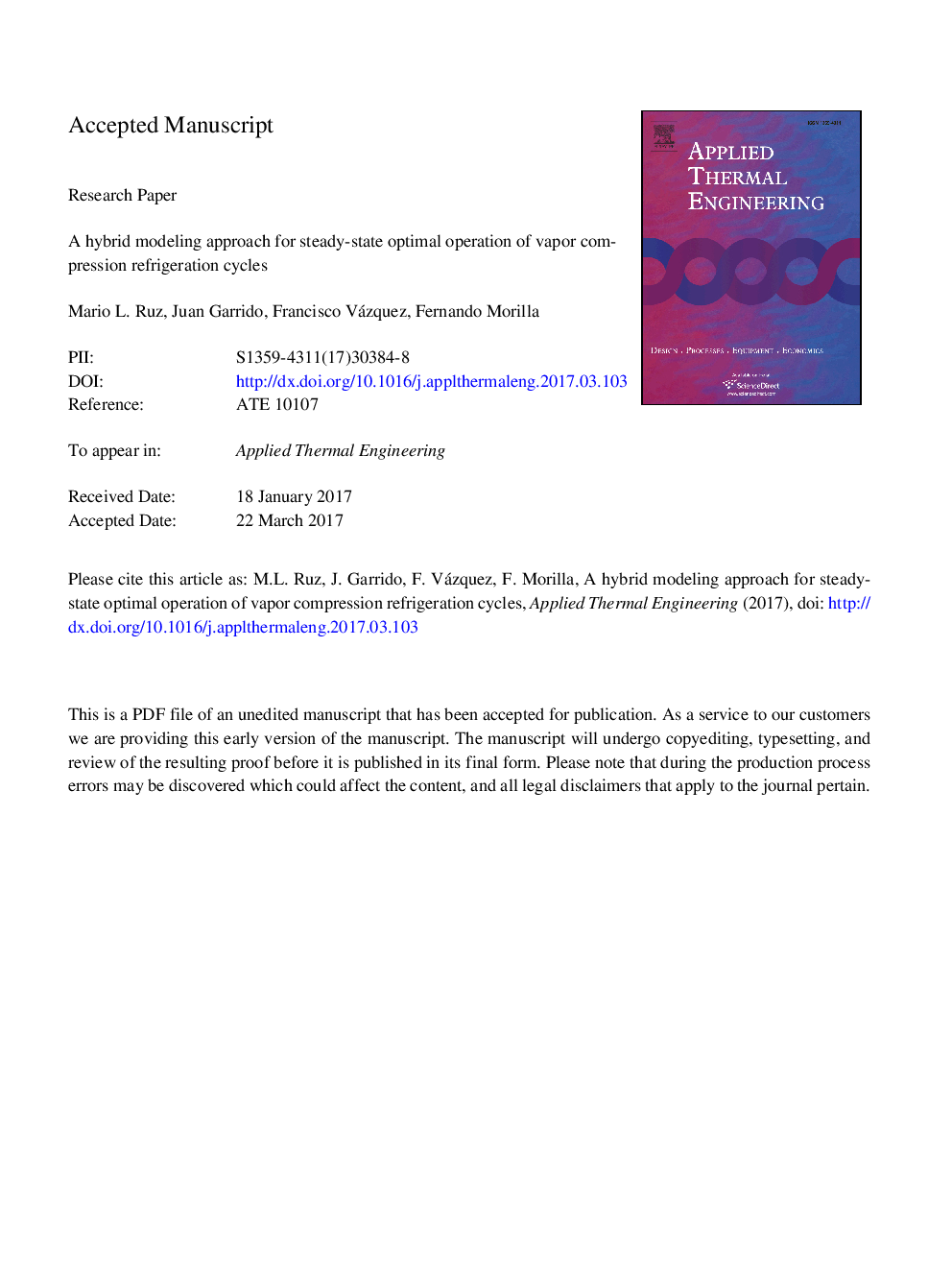| کد مقاله | کد نشریه | سال انتشار | مقاله انگلیسی | نسخه تمام متن |
|---|---|---|---|---|
| 4990986 | 1457109 | 2017 | 24 صفحه PDF | دانلود رایگان |
عنوان انگلیسی مقاله ISI
A hybrid modeling approach for steady-state optimal operation of vapor compression refrigeration cycles
ترجمه فارسی عنوان
یک رویکرد مدل سازی ترکیبی برای عملکرد مطلوب پایدار چرخه های تبرید فشرده سازی بخار
دانلود مقاله + سفارش ترجمه
دانلود مقاله ISI انگلیسی
رایگان برای ایرانیان
کلمات کلیدی
مدل سازی ترکیبی چرخه یخچال فشرده سازی بخار، شناسایی پارامتر، بهینه سازی جهانی،
موضوعات مرتبط
مهندسی و علوم پایه
مهندسی شیمی
جریان سیال و فرایندهای انتقال
چکیده انگلیسی
This paper presents a steady-state hybrid modeling approach for vapor compression refrigeration cycles which is intended to achieve an optimal system operation from an energy consumption point of view. The model development is based on a static characterization of the main components of the cycle using a hybrid approach, and their integration in a new optimization block. This block allows to determine completely the system stationary state by means of a non-linear optimization procedure subjected to several constraints such as mechanical limitations, component interactions, environmental conditions and cooling load demand. The proposed method has been tested in an experimental pilot plant with good results. Model validation for each identified hybrid model is carried out from a set of experimental data of 82 stationary operating points, with prediction errors below ±10%. The model is also globally validated by comparing experimental and simulated data, with a global mean relative absolute error less than 5%. The basic control structure consists of three decentralized control loops where the controller variables are the secondary fluid temperature at the evaporator inlet, the superheat, and the condenser pressure. While the secondary temperature is assumed as an imposed requirement, the optimal set-points of the other two control loops are searched offline using the proposed refrigerant cycle model. This set-point optimality is defined according to the coefficient of performance for minimizing the total electrical power consumption of the system at steady-state. This energy saving has been confirmed experimentally. The proposed method can be easily adapted for different sets of controlled variables in case of modification of the basic control structure. Furthermore, other energy efficiency metrics can be handily adopted. Considering the tradeoff between the accuracy and computational cost of the hybrid models, the proposed procedure is expected to be used in real-time applications.
ناشر
Database: Elsevier - ScienceDirect (ساینس دایرکت)
Journal: Applied Thermal Engineering - Volume 120, 25 June 2017, Pages 74-87
Journal: Applied Thermal Engineering - Volume 120, 25 June 2017, Pages 74-87
نویسندگان
Mario L. Ruz, Juan Garrido, Francisco Vázquez, Fernando Morilla,
